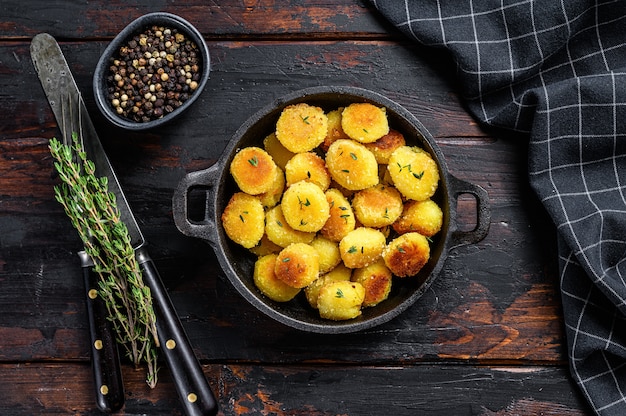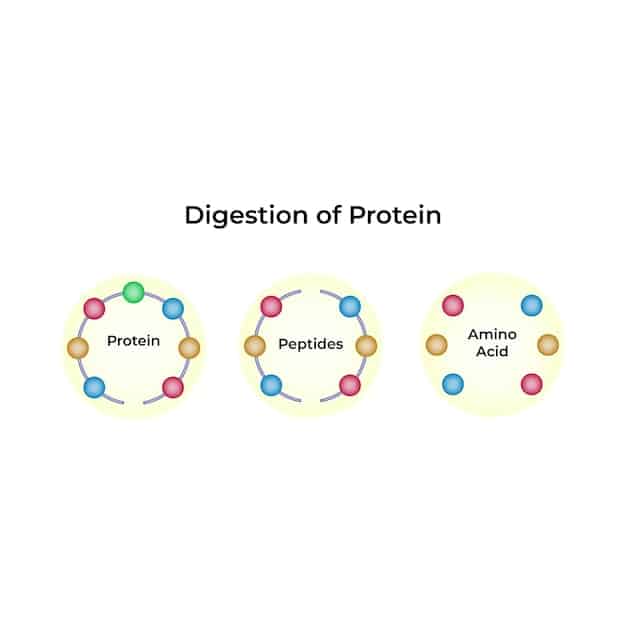Resistant Starch: Can It Lower Your Blood Glucose by 15%?

Resistant starch, a type of carbohydrate that resists digestion in the small intestine, has been shown to potentially lower postprandial blood glucose levels by up to 15% due to its unique properties in affecting glucose metabolism and insulin sensitivity.
Ever heard of a carbohydrate that might actually be *good* for your blood sugar? Let’s dive into the science of resistant starch: can it really lower your postprandial blood glucose by 15%? and explore the potential benefits of this fascinating nutrient.
What is Resistant Starch?
Resistant starch (RS) is a type of starch that isn’t fully broken down and absorbed in the small intestine. Instead, it travels to the large intestine, where it acts as food for beneficial gut bacteria. This unique characteristic sets it apart from other starches.
Unlike regular starches that are quickly digested and raise blood glucose, resistant starch resists digestion, leading to a slower and more gradual rise in blood sugar levels. This has several potential health benefits.
Types of Resistant Starch
Resistant starch isn’t just one thing; it comes in several forms. Here’s a quick overview:
- RS1: Physically inaccessible starch, like that found in whole grains and seeds.
- RS2: Native granular starch, found in raw potatoes and green bananas.
- RS3: Retrograded starch, formed when cooked and cooled starchy foods like potatoes and rice are cooled.
- RS4: Chemically modified starch, not naturally occurring.
- RS5: Starch that forms complexes with lipids
The type of resistant starch affects how it behaves in the gut and influences its health benefits.
In conclusion, resistant starch is a starch that is not broken down into sugar. When it arrives to the large intestine, it functions as a prebiotic nurturing good bacteria. This ultimately can provide health benefits.
How Does Resistant Starch Affect Blood Glucose?
The primary reason resistant starch is gaining attention is its potential impact on blood glucose levels. But how exactly does it work? The key lies in its resistance to digestion.
Because resistant starch isn’t broken down in the small intestine, it doesn’t cause the rapid spike in blood sugar that regular starches do. Instead, it provides a slow and steady release of glucose.

The Science Behind the Numbers
Studies have shown that incorporating resistant starch into your diet can indeed lower postprandial (after-meal) blood glucose levels. But how significant is the effect?
- Some studies suggest a reduction of up to 15% in postprandial blood glucose levels when consuming resistant starch-rich foods.
- The effect can vary depending on the type of resistant starch, the individual’s metabolism, and the overall diet.
- Regular consumption of resistant starch may also improve insulin sensitivity over time.
Regular consumption may promote increased sensitivity to insulin over time. Improved sensitivity may allow the body to use insulin more efficiently, leading to better maintenance of blood sugar levels.
In short, resistant starch can have a positive impact on blood sugar levels by reducing spikes after meals while also improving insulin sensitivity.
What Foods Are High in Resistant Starch?
Including resistant starch in your diet is easier than you might think. Many common foods naturally contain this beneficial starch.
Incorporating a variety of foods high in resistant starch can help you reap its potential health benefits. Here are some examples:
Top Sources of Resistant Starch
Here are some of the best food sources of resistant starch.
- Green Bananas: Unripe bananas are packed with RS2.
- Cooked and Cooled Potatoes: Cooling potatoes after cooking increases their RS3 content.
- Rice (Cooked and Cooled): Similar to potatoes, cooling rice increases RS3.
- Legumes: Beans, lentils, and peas are good sources of RS1.
- Oats: Especially when raw or lightly processed.
Cooking and cooling starchy foods like potatoes and rice can significantly increase their resistant starch content. This process, called retrogradation, changes the structure of the starch molecules.

By knowing which foods contain high levels of resistant starch, you can make thoughtful dietary decisions that potentially help regulate blood sugar by slowing down the process of digestion.
Tips for Incorporating Resistant Starch Into Your Diet
Adding resistant starch to your diet doesn’t require drastic changes. Simple swaps and additions can make a big difference.
Here are some practical tips to help you boost your resistant starch intake.
Simple Strategies for Increasing Intake
Follow these suggestions to benefit from this super starch.
- Cool Your Carbs: Cook and cool potatoes, rice, and pasta before eating them.
- Add Legumes: Include beans and lentils in your meals.
- Eat Green Bananas: Add slightly unripe bananas to smoothies or snacks.
- Overnight Oats: Enjoy raw or lightly processed oats for breakfast.
Consuming resistant starch in moderation is key. Start with small amounts and gradually increase your intake to avoid digestive discomfort.
These strategies may help you reap the health benefits of resistant starch by easily intergrating it into your diet.
Potential Benefits Beyond Blood Glucose Control
While its impact on blood glucose is a major attraction, resistant starch offers other potential health benefits as well. The digestive benefits may include improved gut health and increased satiety.
Resistant starch feeds beneficial gut bacteria, promoting a healthy gut microbiome. This can have far-reaching effects on overall health.
Additional Health Advantages
Here are some more advantages to adding resistant starch to your diet.
- Improved Gut Health: Resistant starch acts as a prebiotic, nourishing beneficial gut bacteria.
- Increased Satiety: It can help you feel fuller for longer, aiding in weight management.
- Reduced Inflammation: Some studies suggest it may reduce inflammation in the gut.
Resistant starch fermentation in the colon produces short-chain fatty acids (SCFAs), such as butyrate, which have anti-inflammatory properties.
Resistant starch is beneficial for your body beyond blood glucose control. The benefit of improved gut health ultimately may help in weight management.
Are There Any Risks or Side Effects?
While resistant starch is generally safe, it’s important to be aware of potential side effects, especially when increasing your intake.
Rapidly increasing your resistant starch intake can lead to digestive discomfort, such as gas and bloating. It’s best to introduce it gradually.
Precautions and Considerations
Be aware of these side effects and precautions when choosing to add resistant starch to your diet.
- Start Slowly: Gradually increase your intake to avoid digestive issues.
- Stay Hydrated: Drink plenty of water to help with digestion.
- Listen to Your Body: Pay attention to how your body responds and adjust your intake accordingly.
People with certain digestive conditions, such as Irritable Bowel Syndrome (IBS), may need to be more cautious with resistant starch. Consulting with a healthcare professional or registered dietitian is always a good idea.
It is important to take the precautions above into consideration so that you can enjoy the benefits without suffering from the side effects.
| Key Point | Brief Description |
|---|---|
| 🌱 Resistant Starch Types | RS1-RS5 found in various foods like grains, bananas, and cooked/cooled items. |
| 🩸 Glucose Impact | May lower post-meal blood glucose by up to 15% and improves insulin sensitivity. |
| 🍽️ Food Sources | Green bananas, cooled potatoes/rice, legumes, and oats are high in it. |
| ⚕️ Gut Health | Acts as prebiotic, benefits gut bacteria, and reduces gut inflammation. |
Frequently Asked Questions
▼
Resistant starch is a type of carbohydrate that resists digestion in the small intestine. Unlike regular starches that are quickly broken down into glucose, resistant starch passes into the large intestine, where it feeds beneficial gut bacteria.
▼
Resistant starch does not get broken down and thus releases glucose slowly. The gradual rise in blood sugar can help prevent postprandial spikes improving insulin sensitivity for better blood glucose management.
▼
Excellent sources of resistant starch include green bananas, cooked and cooled potatoes and rice, legumes (like beans and lentils), and oats. Incorporating these into your diet can boost your resistant starch intake.
▼
While generally safe and may have multiple benefits, excessive resistant starch intake can lead to digestive discomfort like bloating and gas. It’s best to increase your intake gradually to allow your gut to adjust.
▼
Resistant starch can be beneficial, but it’s best to consult with a healthcare provider or a registered dietitian. These professionals can help determine how resistant starch fits into your individual health needs.
Conclusion
The science of resistant starch: can it really lower your postprandial blood glucose by 15%? is a promising area of nutrition research. By understanding its mechanisms, incorporating resistant starch-rich foods into your diet, and being mindful of potential side effects, you can harness its potential benefits for blood glucose control and overall health.





